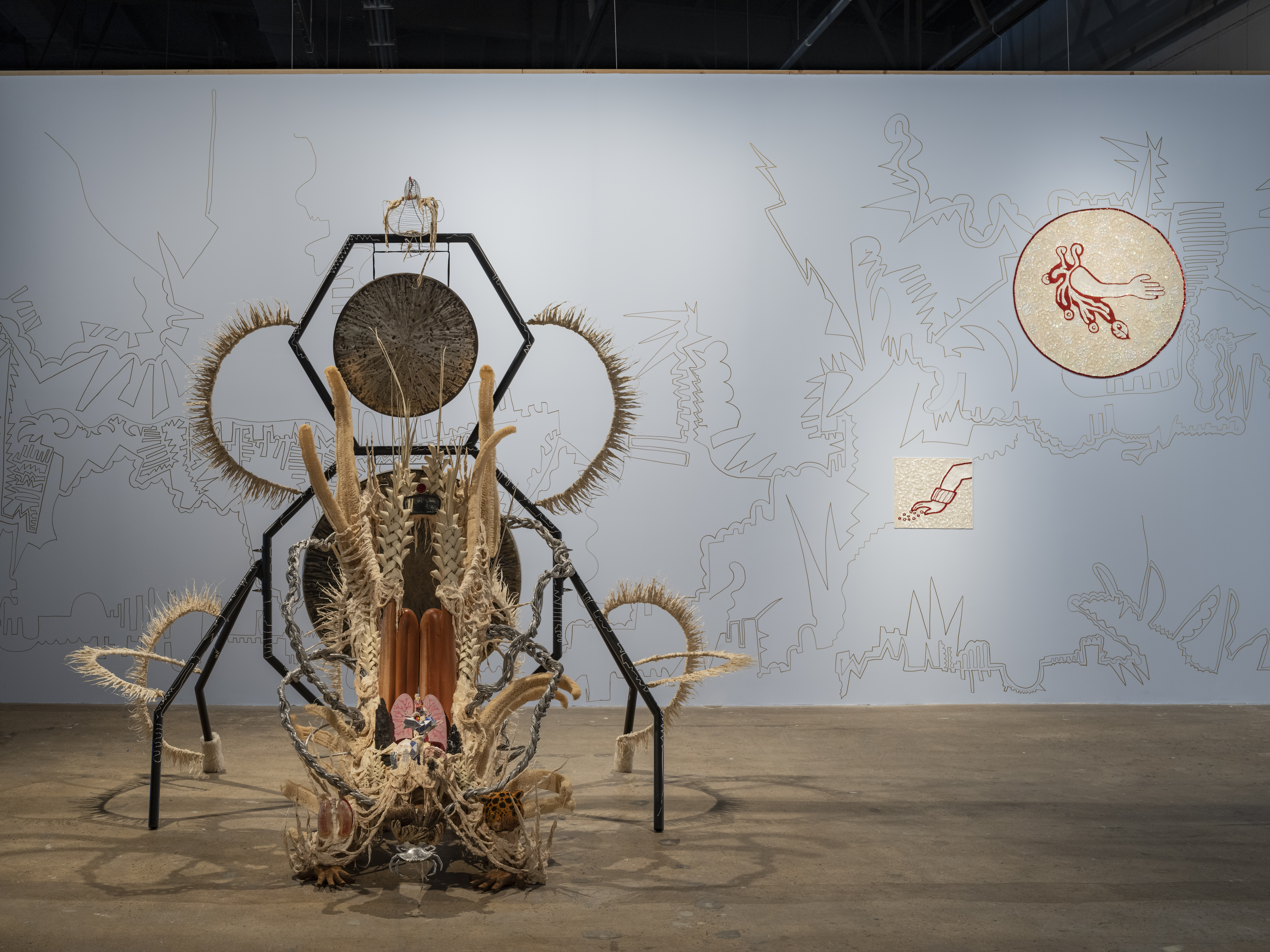Guadalupe Maravilla
Born 1976 | San Salvador
Lives and works New York
At the age of eight, Guadalupe Maravilla was part of the first wave of unaccompanied, undocumented children to arrive at the United States border because of the Salvadoran Civil War in the 1980s. Combining pre-colonial Central American ancestry, personal mythology, and collaborative performative acts, Maravilla’s sculptures, drawings, and performances trace the history of his own, and others’, displacement. In doing so, he nurtures collective narratives of trauma into celebrations of perseverance and humanity, exploring how the systemic abuse of immigrants physically manifests in the body, reflecting on his own battle with cancer. Maravilla’s Disease Throwers, large-scale sculptures he describes as ‘healing machines’, serve as symbols of renewal, generating therapeutic, vibrational sound. His embroideries include imagery of disembodied limbs, hands and clenched fists, skulls, and dripping blocks of ice (a reference to ICE, the US Immigration and Customs Enforcement). They are contemporary emblems symbolising resistance against the persecution of, and political pressure on, undocumented immigrants.
Guadalupe Maravilla, Installation view, 14th Gwangju Biennale (2023). Image courtesy Gwangju Biennale Foundation. Photo: glimworkers
